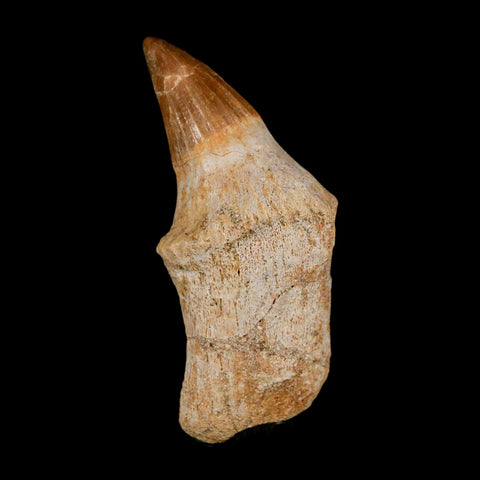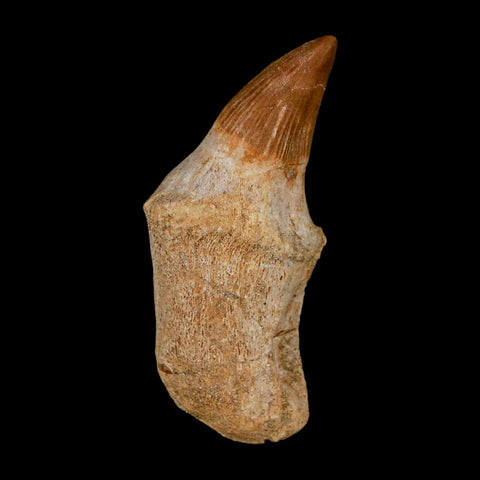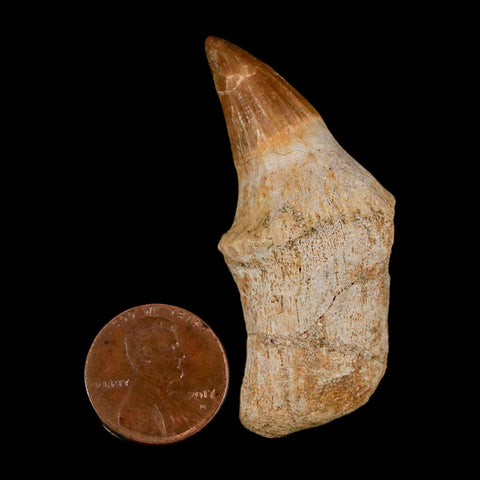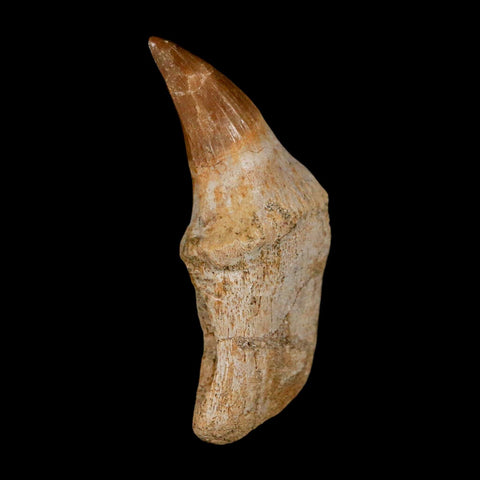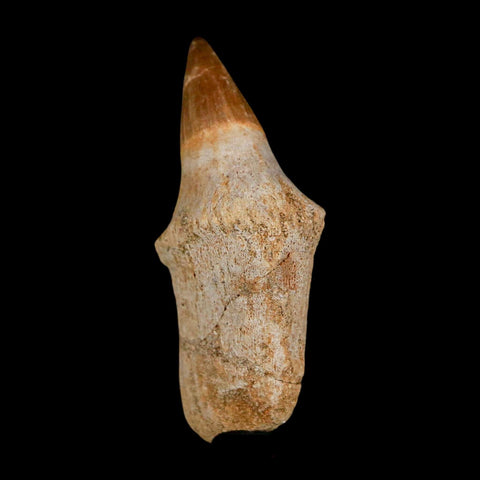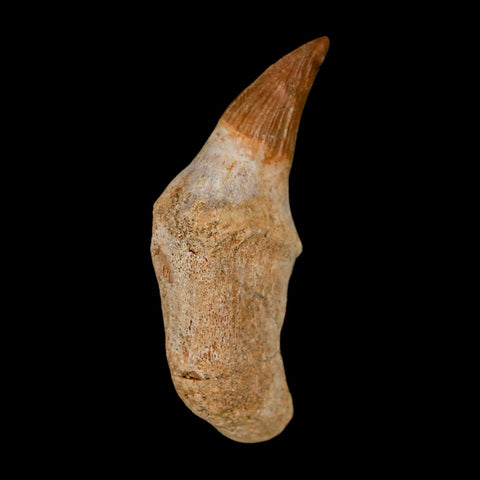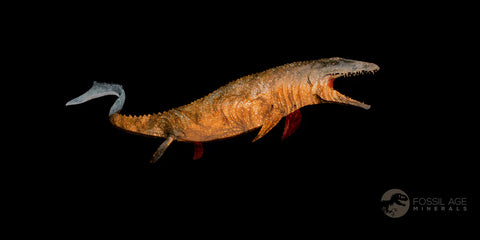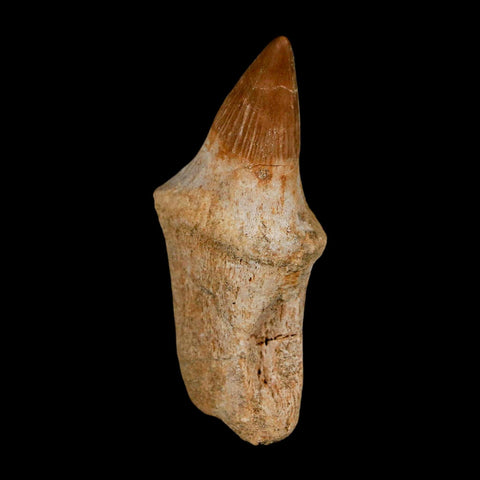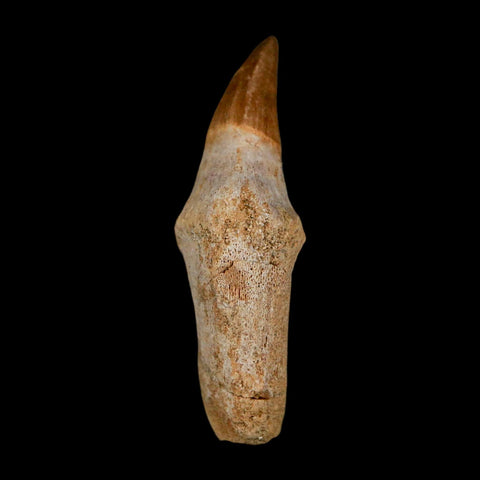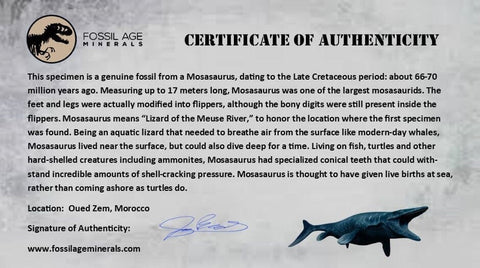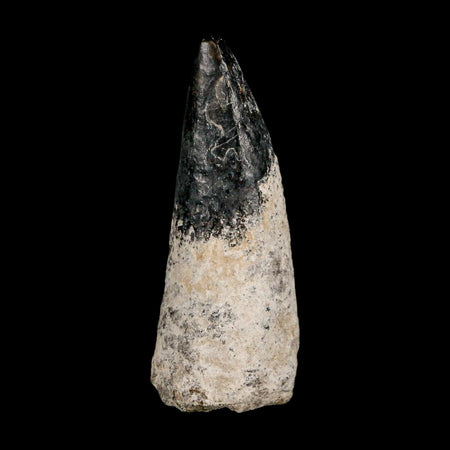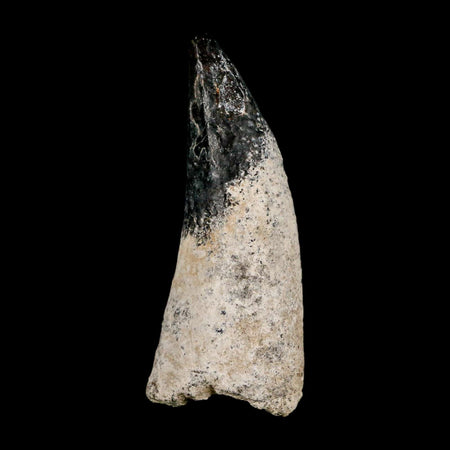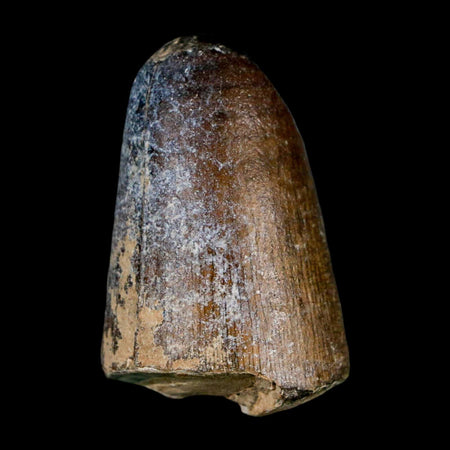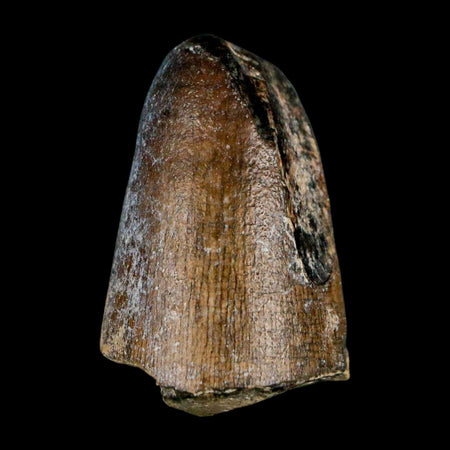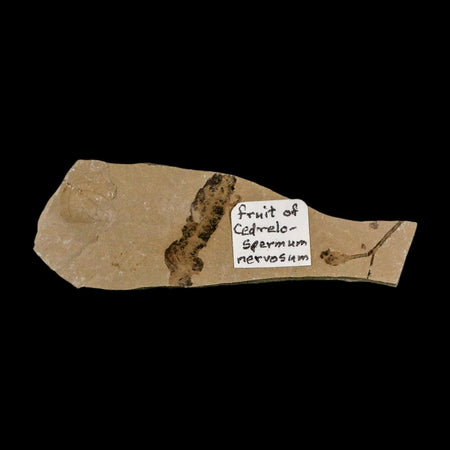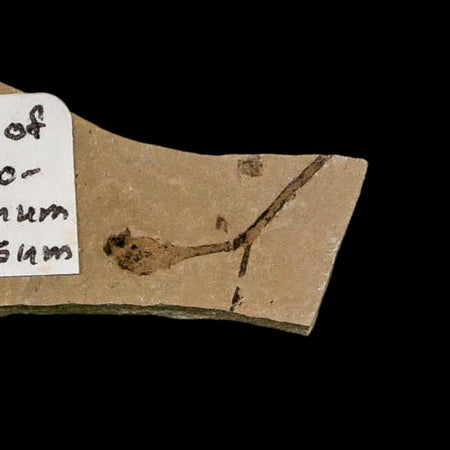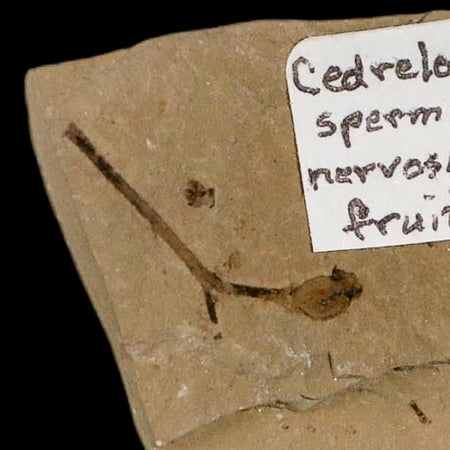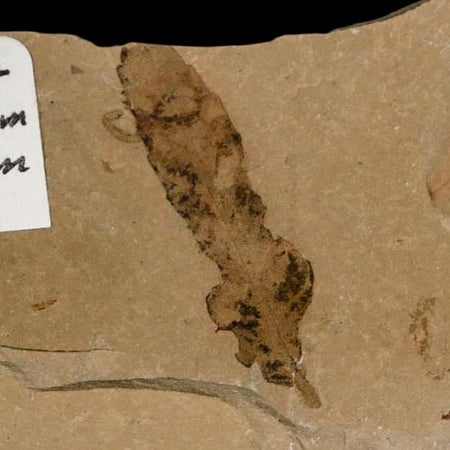2.1" Mosasaur Platecarpus Fossil Tooth Rooted Cretaceous Dinosaur Era COA
Location: Oued Zem, Morocco
Weight: 0.6 Ounces
Tooth Dimensions: 2.1 Inches Long, 0.9 Inches Wide, 0.6 Inches Thick
Comes with a Certificate of Authenticity.
The item pictured is the one you will receive.
100 - 66 Million Years old, Upper Cretaceous, Maastrichtian Epoch.
Name: Platecarpus (Flat wrist).
Named By: Edward Drinker Cope - 1869.
Diet: Carnivore.
Size: 4.3 meters long.
Time period: Santonian to early Campanian of the Cretaceous.
Fossil representation: Remains of multiple individuals, some of them revealing impressions of soft tissues.
Platecarpus was a medium-sized Mosasaur characterized by long, narrow jaws filled with sharp, pointed teeth. It reached about 24 feet (7 meters) in length and roamed the shallow seas during the Late Cretaceous, hunting small fish and squid. Unlike its larger and more aggressive relative, Tylosaurus—a fierce predator with a keen eye for movement—Platecarpus was more selective in its prey. Despite not being the largest mosasaur, it was among the most common, with fossils discovered in ancient seabeds across North America, Europe, and Africa. Like all mosasaurs, it moved through the water using a long, muscular, vertically flattened tail for propulsion and flipper-like limbs for steering. Some fossil specimens show thick eardrums, suggesting an adaptation for pursuing fish into deeper waters.

Please be aware of the nature of fossils:
Being buried under tons of pressure for millions of years can be quite harsh. No fossil is found entirely intact and perfect. Most fossils require some restoration, and some are even modified by humans to improve their appearance. In Morocco, workers perform a highly professional job of uncovering and preserving these natural treasures, although natural cracks are often visible on the surface. These cracks are part of the fossil's natural beauty and are not seen as flaws.


